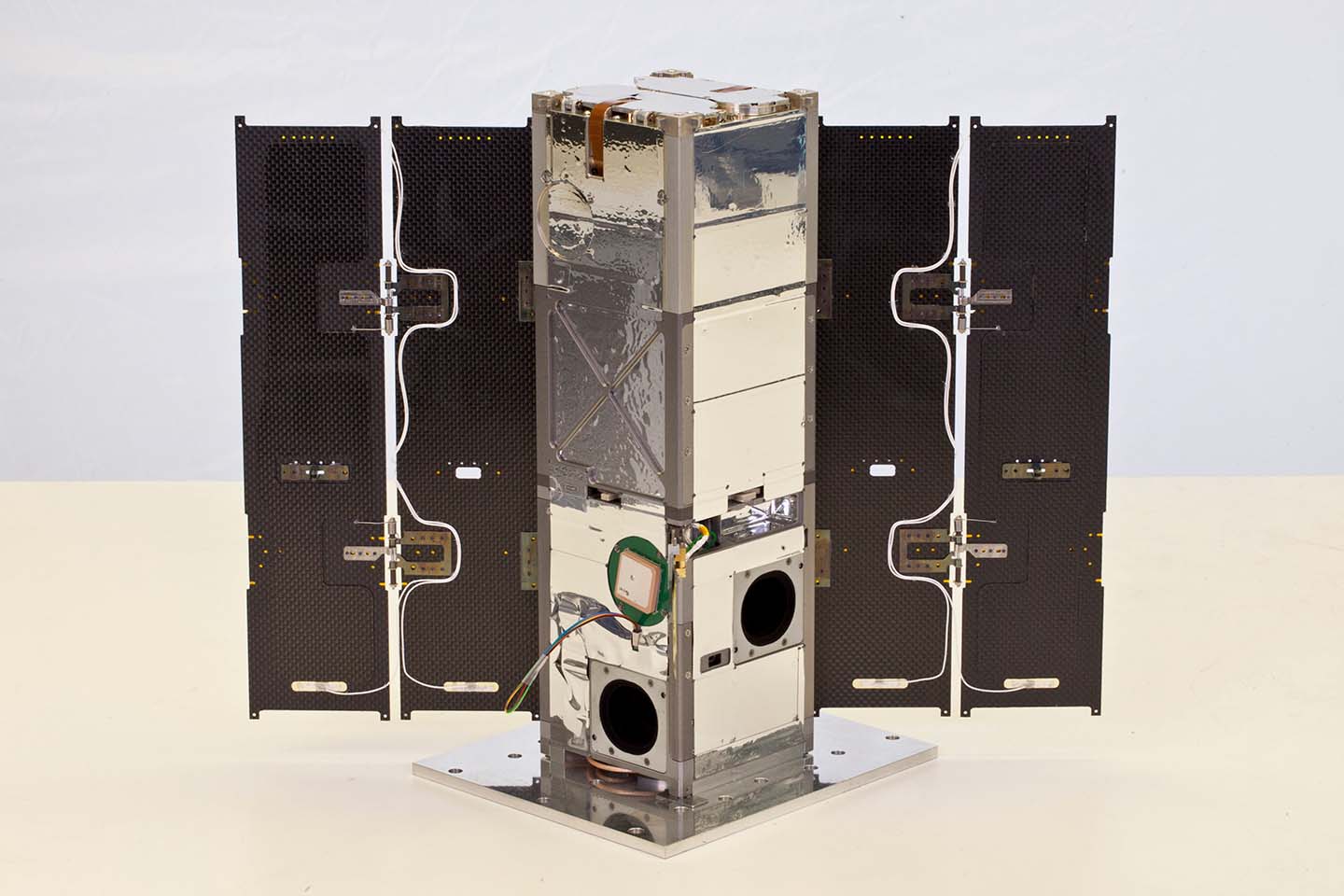Press Release
Johns Hopkins APL’s RAVAN Takes Second Place at AIAA SmallSat Awards
Thu, 08/24/2017 - 12:02
The Radiometer Assessment using Vertically Aligned Nanotubes (RAVAN) CubeSat, led by the Johns Hopkins University Applied Physics Laboratory, placed second in the “Mission of the Year” award voting at the 31st Annual American Institute of Aeronautics and Astronautics (AIAA) and Utah State University Small Satellite Conference held in Logan, Utah, August 5–10, 2017.
RAVAN, funded by the NASA In-Space Validation of Earth Science Technologies (InVEST) program in the Earth Science Technology Office (ESTO), is a 3U CubeSat that uses four small, extremely sensitive and accurate radiometers with carbon nanotube absorbers that detect the difference between energy that reaches Earth from the Sun and outgoing radiation, known as the Earth Radiation Imbalance (ERI). The spacecraft bus was built and is operated by Blue Canyon Technologies in Boulder, Colorado. RAVAN entered low Earth orbit on November 11, 2016.
“The whole RAVAN team is really honored to have had such support from the small satellite community,” said APL’s Bill Swartz, RAVAN principal investigator. “RAVAN is demonstrating new technologies that could enable future science missions using small satellites, and since meeting our primary mission objectives, we’ve been learning more about our instruments as RAVAN continues to collect good data.”
The AIAA Small Satellite Mission of the Year Award is presented annually to the mission that has demonstrated a significant improvement in the capability of small satellites. The 2017 eligible missions launched, established communication, and acquired results from on-orbit since January 1, 2016, with a wet mass of less than 150 kg. Over 1,200 small satellite enthusiasts voted for this year’s 10 small satellite nominees, which were selected by experts on the AIAA SmallSat technical committee. NASA’s Cyclone Global Navigation Satellite System (CYGNSS) won the “Mission of the Year” award.
